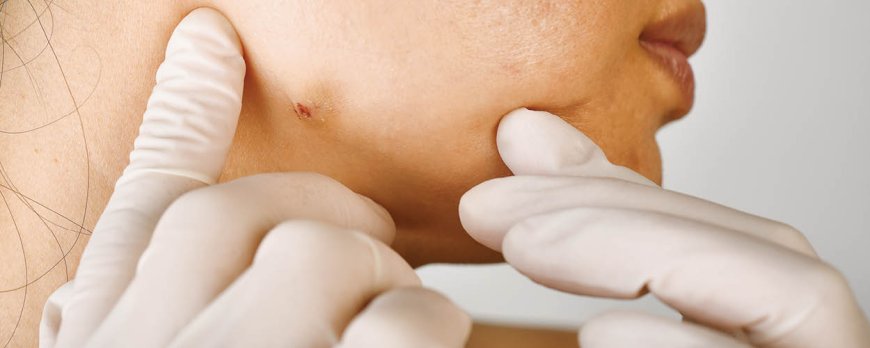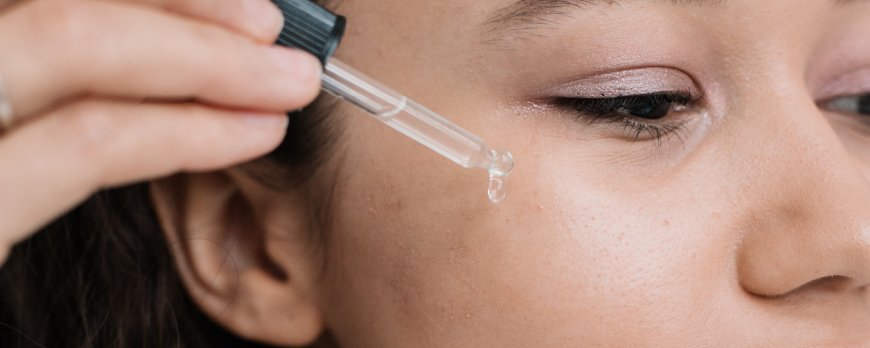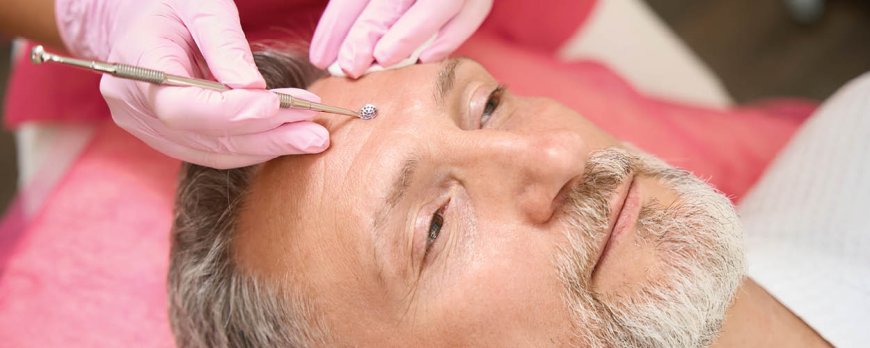How do I know if doxycycline is working for acne?
Determining the efficacy of doxycycline on acne can be tricky. Our guide on 'How do I know if doxycycline is working for acne?' provides clear insights.

How do I know if doxycycline is working for acne?
Doxycycline is a commonly prescribed antibiotic for acne, but how can you determine if it's actually working? This article will provide you with insights on doxycycline's effectiveness in treating acne and the signs that indicate it is clearing your skin.
Key Takeaways:
- Doxycycline is an antibiotic used to treat moderate to severe inflammatory acne.
- It works by reducing acne-causing bacteria and inflammation on the skin.
- Improvements in acne may be seen within 2 to 4 weeks, but significant results can take up to 12 weeks.
- Common side effects of doxycycline include nausea, stomach upset, and sensitivity to sunlight.
- If doxycycline is not effective, alternative antibiotics may be prescribed.

How does doxycycline work for acne?
Doxycycline works by targeting the bacteria that contribute to acne breakouts and reducing inflammation in the skin. It belongs to a class of antibiotics called tetracyclines and is commonly prescribed for moderate to severe inflammatory acne. When taken orally, doxycycline is absorbed into the bloodstream and distributed throughout the body, including the sebaceous glands in the skin.
Once inside the sebaceous glands, doxycycline inhibits the growth of Propionibacterium acnes, a type of bacteria that plays a significant role in the development of acne. By reducing the number of acne-causing bacteria, doxycycline helps to minimize the formation of new pimples and blemishes.
In addition to its antibacterial properties, doxycycline also possesses anti-inflammatory effects. It works by suppressing the production of certain pro-inflammatory molecules that contribute to the redness, swelling, and discomfort associated with acne. By reducing inflammation in the skin, doxycycline helps to improve the overall appearance and severity of acne.
It is important to note that doxycycline should be taken as directed by your healthcare provider, and it may take several weeks to see noticeable improvements in your acne. Additionally, doxycycline is usually used in combination with topical acne medications for optimal results. If you have any concerns or questions about how doxycycline works for your acne, it is best to consult with your healthcare provider.
Timeline for seeing results with doxycycline
It's important to have realistic expectations when starting doxycycline treatment for acne, as it can take time to see noticeable results. While some individuals may start to see improvements in their acne within a couple of weeks, it is more common for the full effects of doxycycline to be seen after 2 to 4 weeks of consistent use.
During the initial weeks of treatment, it is common for acne to initially worsen before it starts to improve. This is known as the "purging" phase, where doxycycline helps to bring underlying acne to the surface. This process may result in the appearance of new pimples, but it is a sign that doxycycline is working to clear your skin.
It's important to note that every individual's response to doxycycline may vary. Some people may see significant improvements within the first month, while others may need to continue treatment for up to 12 weeks to see desired results. It's crucial to follow your healthcare provider's recommended course of treatment and be patient in order to achieve the best possible outcome.
Combining doxycycline with topical treatments
In some cases, healthcare providers may recommend using doxycycline alongside topical acne treatments to achieve better results. This combination approach can be particularly beneficial for individuals with moderate to severe inflammatory acne. By combining oral doxycycline with topical medications, the treatment can target acne-causing bacteria both internally and externally, leading to improved outcomes.
Topical treatments often contain ingredients such as benzoyl peroxide, retinoids, or antibiotics that work directly on the skin to reduce inflammation and unclog pores. When used alongside doxycycline, these topical treatments can complement the antibiotic's action and enhance its effectiveness in clearing acne.
It is important to note that combining doxycycline with topical treatments should be done under the guidance of a healthcare provider. They will assess your specific condition and determine the most suitable combination therapy for you. Additionally, they will provide instructions on how to use both the oral and topical medications to ensure optimal results while minimizing the risk of side effects.
Maximizing the effectiveness of combination treatment
- Follow your healthcare provider's instructions regarding the use of both doxycycline and the topical acne treatments.
- Apply the topical medications as directed, following the recommended frequency and amount.
- Be consistent with your treatment regimen, using both oral and topical medications regularly.
- Continue using the topical treatments even after completing the doxycycline course to maintain clear skin.
- Be aware of potential side effects from both doxycycline and the topical treatments and consult your healthcare provider if any concerns arise.
- Protect your skin from excessive sun exposure by using sunscreen, wearing protective clothing, and avoiding prolonged periods in direct sunlight.
- Stay hydrated and maintain a healthy diet to support overall skin health.
By combining doxycycline with topical treatments and following these tips for maximizing effectiveness, you can improve your chances of achieving clearer skin and managing acne successfully.
Common Side Effects of Doxycycline
Like any medication, doxycycline can cause side effects, although they are generally mild and manageable. It's important to be aware of these potential side effects and know how to address them. Here are some common side effects that may occur while taking doxycycline:
- Nausea and stomach upset: Some people may experience mild gastrointestinal symptoms, such as nausea, stomach pain, or diarrhea. Taking doxycycline with food can help alleviate these symptoms.
- Sensitivity to sunlight: Doxycycline can make your skin more sensitive to the sun, increasing the risk of sunburn. It is recommended to wear protective clothing and sunscreen with a high SPF when going outside.
- Discoloration of teeth: Doxycycline may cause permanent discoloration of developing teeth in children under the age of 8. It is not usually prescribed to this age group for this reason.
- Yeast infections: Antibiotics, including doxycycline, can disrupt the natural balance of bacteria in the body, leading to yeast infections in some individuals. If you experience symptoms such as itching, burning, or unusual discharge, consult your healthcare provider.
If you encounter any of these side effects while taking doxycycline, it is important to inform your healthcare provider. They can provide guidance on managing these symptoms and determine if any adjustments to your treatment plan are necessary. It is also essential to follow the full course of treatment as prescribed and continue using topical acne medications as recommended to maintain clear skin.
Please note that these side effects are generally rare, and not everyone experiences them. If you have concerns or questions about doxycycline or its potential side effects, consult your healthcare provider for personalized advice.

Monitoring Doxycycline Effectiveness for Acne
Regular monitoring of your acne progress while on doxycycline can help determine if the medication is effectively treating your acne. Here are some key factors to consider in evaluating the effectiveness of doxycycline for acne:
1. Timeframe:
It is important to have realistic expectations regarding the timeline for seeing results with doxycycline. While some people may notice improvements in their acne within 2 to 4 weeks, it can take up to 12 weeks for more significant results. Patience is key, as consistent use of the medication is necessary to allow it to take full effect.
2. Acne Severity:
Keep in mind that the effectiveness of doxycycline may vary depending on the severity of your acne. It is typically most effective for moderate to severe inflammatory acne. If you have milder acne, your healthcare provider may recommend alternative treatments or a lower dose of doxycycline.
3. Symptoms:
Observe any changes in your acne symptoms while on doxycycline. Look for a reduction in the number and severity of breakouts, as well as a decrease in redness and inflammation. Keep in mind that it may take some time to see these improvements, so it is important to be patient and consistent with your treatment regimen.
Remember to discuss your progress with your healthcare provider during follow-up visits. They will be able to evaluate your acne and make any necessary adjustments to your treatment plan. If doxycycline is not effectively treating your acne, they may consider alternative medications or combination therapies to achieve better results.
Alternatives to doxycycline for acne treatment
If doxycycline does not provide satisfactory results or is not suitable for you, there are alternative antibiotics that can be considered for acne treatment. These alternatives work by targeting acne-causing bacteria and reducing inflammation, helping to clear up breakouts and improve the overall appearance of the skin. It is recommended to consult with a healthcare provider to determine the most appropriate alternative treatment option for your specific case.
1. Clindamycin
Clindamycin is a commonly prescribed antibiotic for acne treatment. It works by inhibiting the growth of acne-causing bacteria and reducing inflammation. Clindamycin is available in both topical and oral forms, and your healthcare provider will determine which option is best for you based on the severity and type of acne.
2. Erythromycin
Erythromycin is another antibiotic that can be used as an alternative to doxycycline for acne treatment. It works by targeting and eliminating acne-causing bacteria on the skin. Erythromycin is available in both topical and oral forms, and your healthcare provider will determine the most appropriate option for your specific needs.
3. Trimethoprim
Trimethoprim is a bacteriostatic antibiotic that can be used in combination with topical treatments for acne. It works by inhibiting the growth and reproduction of bacteria, reducing the occurrence of acne breakouts. Trimethoprim is typically used when other antibiotics have been ineffective or when there is concern about bacterial resistance.
It is important to note that while alternative antibiotics can be effective in treating acne, they may also have their own side effects and considerations. Your healthcare provider will take into account your medical history, allergies, and other factors to determine the most suitable alternative treatment for you. Always follow your healthcare provider's instructions and continue to use topical treatments as recommended to maintain clear skin.
Tips for Maximizing the Effectiveness of Doxycycline
Alongside taking doxycycline, there are steps you can take to optimize its effectiveness in clearing your acne. By following these tips, you can increase your chances of seeing positive results and improving your skin health.
1. Stay Consistent
It is essential to take doxycycline as prescribed by your healthcare provider. Make sure to take it at the same time every day and complete the full course of treatment. Skipping doses or stopping the medication prematurely can hinder its effectiveness in treating your acne.
2. Practice Good Skincare
In addition to taking doxycycline, maintaining a healthy skincare routine is crucial for managing acne. Cleanse your face twice daily with a gentle cleanser and avoid harsh scrubbing, as this can irritate the skin. Use oil-free and non-comedogenic moisturizers and sunscreens to keep your skin hydrated and protected from harmful UV rays.
3. Avoid Triggering Factors
Identifying and avoiding trigger factors that exacerbate your acne can significantly enhance the effectiveness of doxycycline. These may include certain foods, stress, hormonal changes, and excessive oil production. Keep a journal to track potential triggers and modify your lifestyle accordingly to support your acne treatment.
4. Implement a Healthy Diet and Lifestyle
A well-balanced diet rich in fruits, vegetables, whole grains, and lean proteins can promote skin health and complement the effects of doxycycline. Regular exercise, adequate sleep, and stress management techniques can also contribute to overall well-being and support your acne treatment.
By following these tips and maintaining open communication with your healthcare provider, you can maximize the effectiveness of doxycycline in clearing your acne. Remember, everyone's experience with acne treatment is unique, so it is essential to work closely with a healthcare professional to find the most suitable approach for your specific needs.

Maintaining Clear Skin After Using Doxycycline
To maintain clear skin post-doxycycline treatment, it's essential to establish a skincare routine and continue using recommended topical treatments. Here are some tips to help you keep your skin healthy and acne-free:
1. Cleanse Twice a Day
Washing your face twice daily with a gentle cleanser is crucial for maintaining clear skin. Choose a cleanser that is suitable for your skin type and make sure to cleanse your face in the morning and before bed. This will help remove any dirt, oil, and impurities that can clog your pores and lead to breakouts.
2. Moisturize Daily
After cleansing, don't forget to moisturize your skin. Even if you have oily skin, moisturizing is essential to keep your skin hydrated and balanced. Look for oil-free and non-comedogenic moisturizers that won't clog your pores. Applying moisturizer regularly will help maintain your skin's elasticity and prevent dryness.
3. Use Sun Protection
Protecting your skin from the sun is crucial to prevent damage and maintain a clear complexion. Choose a broad-spectrum sunscreen with an SPF of 30 or higher and apply it generously to all exposed areas of your skin. Remember to reapply every two hours, especially if you're spending time outdoors or sweating.
4. Stick to Your Topical Treatments
Continue using any topical acne medications prescribed by your dermatologist even after completing your doxycycline treatment. Topical treatments, such as retinoids or benzoyl peroxide, can help prevent new breakouts and maintain the results achieved with doxycycline. Follow your healthcare provider's instructions on how to use these medications effectively.
By establishing a consistent skincare routine and following these tips, you can maximize the effectiveness of your doxycycline treatment and maintain clear, healthy skin in the long term.
Potential drug interactions with doxycycline
It's crucial to inform your healthcare provider about any medications you are taking to avoid potential drug interactions with doxycycline. Certain medications can interact with doxycycline, affecting its effectiveness or causing adverse reactions. Here are some important points to keep in mind:
- Oral contraceptives: Doxycycline can reduce the effectiveness of hormonal birth control methods, such as pills, patches, or implants. It is recommended to use an additional form of contraception while taking doxycycline and for one week after completing the course of antibiotics.
- Antacids and supplements: Avoid taking doxycycline with antacids, iron supplements, calcium supplements, or products that contain magnesium or aluminum. These can interfere with the absorption of doxycycline, reducing its effectiveness.
- Blood-thinning medications: Doxycycline may increase the risk of bleeding when taken with blood-thinning medications, such as warfarin. Close monitoring of blood clotting parameters may be necessary.
- Anticoagulants: Combining doxycycline with anticoagulant medications, such as heparin, can also increase the risk of bleeding. Regular monitoring is important to ensure proper dosage adjustments.
It is essential to inform your healthcare provider about all prescription medications, over-the-counter drugs, and supplements you are taking. This includes herbal remedies and vitamins, as they can also interact with doxycycline. Your healthcare provider will evaluate any potential drug interactions and make necessary adjustments to your treatment plan.
Remember to always follow your healthcare provider's instructions and never stop or alter medication without their guidance. They are the best resource to help you navigate potential drug interactions and ensure the safe and effective use of doxycycline for acne treatment.
Conclusion
Monitoring the effectiveness of doxycycline treatment for acne is crucial for understanding if the medication is effectively addressing your skin concerns. Doxycycline is an antibiotic commonly prescribed to treat acne, particularly moderate to severe inflammatory acne. It works by reducing the amount of acne-causing bacteria on the skin and calming inflammation. If you are using doxycycline for acne, there are several signs to look out for to determine if the medication is working.
Typically, it takes about 2 to 4 weeks to start seeing improvements in acne while using doxycycline. However, significant results may take up to 12 weeks. During this time, you should observe a reduction in the number and severity of acne breakouts. The appearance of existing pimples should also start to diminish, and your skin may become clearer and less inflamed. These are positive indications that the doxycycline is effectively treating your acne.
It is important to note that doxycycline is often used in combination with topical acne medications to enhance treatment outcomes. These topical treatments, such as creams or gels containing benzoyl peroxide or retinoids, can further help to clear acne and prevent new breakouts. Therefore, it is essential to continue using these topical treatments as instructed by your healthcare provider, even if you see improvements with the doxycycline.
While doxycycline is generally well-tolerated, it can cause some side effects. Common side effects of doxycycline include nausea, stomach upset, and sensitivity to sunlight. If you experience any severe or persistent side effects, it is important to consult your healthcare provider. Additionally, it is crucial to discuss any potential drug interactions with your healthcare provider before starting doxycycline treatment.
If doxycycline does not work for you or if you experience any intolerable side effects, there are alternative antibiotics that can be prescribed. Your healthcare provider can evaluate your individual case and determine the most appropriate treatment option for your acne.

FAQ
How do I know if doxycycline is working for acne?
Signs that doxycycline is effectively treating acne include a reduction in acne-causing bacteria on the skin, decreased inflammation, and visible improvements in the appearance of acne. It usually takes 2 to 4 weeks to see initial improvements, but significant results may take up to 12 weeks.
How does doxycycline work for acne?
Doxycycline works for acne by reducing the amount of acne-causing bacteria on the skin and calming inflammation. It is most effective for moderate to severe inflammatory acne and may be used in combination with topical acne medications.
What is the timeline for seeing results with doxycycline?
While individual results may vary, it typically takes 2 to 4 weeks to see improvements in acne while using doxycycline. However, significant results may take up to 12 weeks. If you are not seeing any improvements within this timeframe, it is important to consult your healthcare provider.
Can doxycycline be combined with topical treatments?
Yes, doxycycline can be used in combination with topical acne medications to enhance treatment outcomes. It is important to follow your healthcare provider's instructions and continue using topical treatments as prescribed.
What are the common side effects of doxycycline?
Common side effects of doxycycline include nausea, stomach upset, sensitivity to sunlight, and potential interactions with other drugs. If you experience any severe or persistent side effects, it is important to seek medical attention.
How should I monitor the effectiveness of doxycycline for acne?
It is important to regularly evaluate the effectiveness of doxycycline treatment for acne. If you are not seeing any improvements or if your acne worsens, consult your healthcare provider for further evaluation and potential adjustments to your treatment plan.
Are there alternatives to doxycycline for acne treatment?
If doxycycline is not effective in treating your acne, there are alternative antibiotics that can be prescribed. Your healthcare provider can recommend the most suitable alternative based on your individual needs.
What are some tips for maximizing the effectiveness of doxycycline?
To maximize the effectiveness of doxycycline treatment for acne, it is important to take the medication as prescribed, follow a consistent skincare routine, avoid excessive sun exposure, and avoid potential drug interactions by discussing all medications with your healthcare provider.
How can I maintain clear skin after using doxycycline?
To maintain clear skin after completing doxycycline treatment, it is important to continue using topical acne treatments as recommended by your healthcare provider. Establishing a consistent skincare routine, practicing good hygiene, and adopting a healthy lifestyle can also help prevent future breakouts.
Are there potential drug interactions with doxycycline?
Yes, doxycycline may interact with certain medications, including antacids, blood thinners, and oral contraceptives. It is important to inform your healthcare provider about all medications you are taking to avoid potential interactions.



































































































































